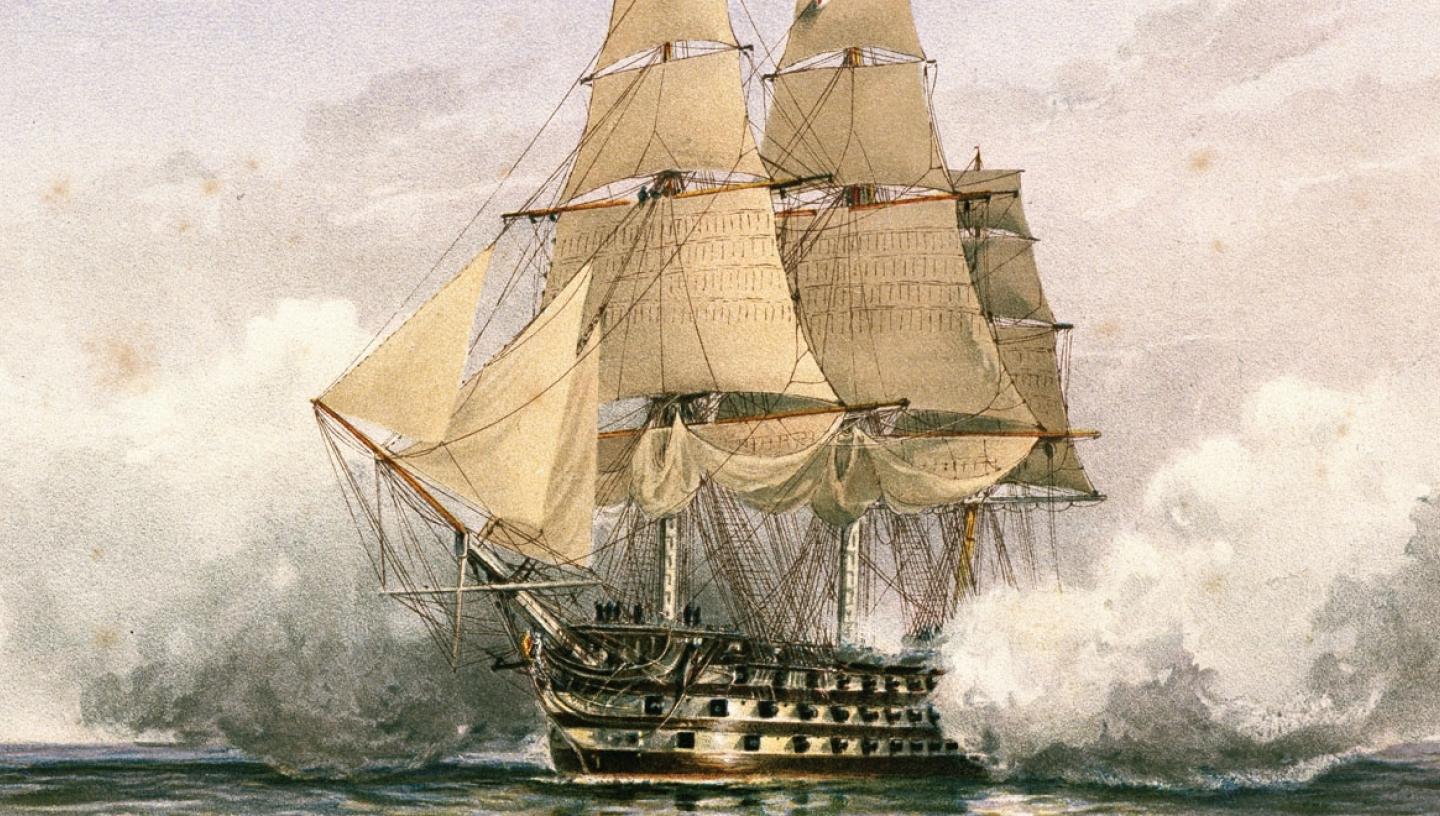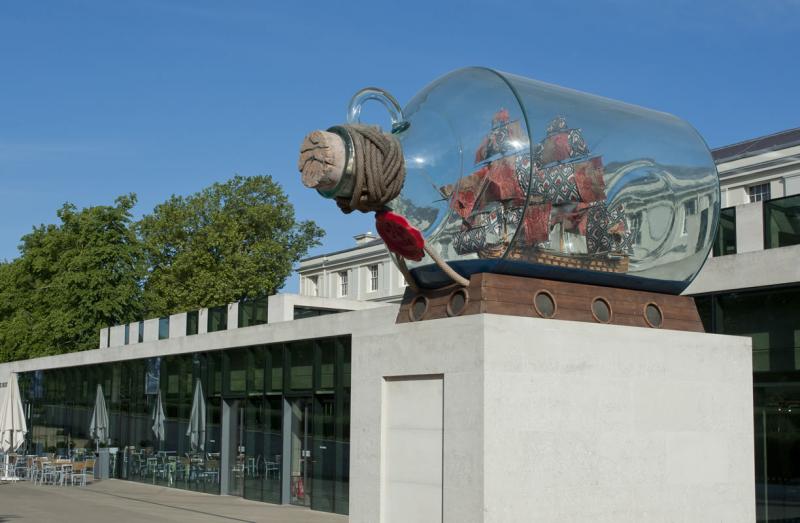
Nelson served in the Victory for just over two years until his death at the Battle of Trafalgar, but the ship had been in active service for more than 20 years.
1759: Building of HMS Victory
Victory was designed by Sir Thomas Slade and built at Chatham Dockyard. Over 2000 oak trees were used in the construction of the hull – equivalent to 60 acres of forest. The final cost was £63,176 (over £50 million today).
The decision to name the ship Victory was not popular. The previous ship of that name had sunk with all on board in the English Channel in 1744, so sailors believed the name unlucky.
1765: HMS Victory is launched
Victory was launched on 7 May 1765, but was only commissioned for active service in March 1778 to take part in the War of American Independence (1775–83). The ship had 104 guns, 27 miles of rigging and four acres of sail. Quickly proving successful, Victory could sail faster than many of its smaller consorts, thanks to the excellent design of the underwater hull.

1793–97: A mighty ship of the line
Following a refit and a period of peace, Victory was recommissioned in 1793 as the flagship of Vice-Admiral Lord Hood in the Mediterranean. The ship was involved in the Siege of Toulon in 1793, as part of an Anglo-Spanish fleet that was eventually forced to surrender the French port to Napoleon’s forces. It also took part in the siege of Calvi in 1794, as part of the British fleet that ousted the French from Corsica.
After another refit during the winter of 1794–95 Victory returned to the Mediterranean and became the flagship of the new commander-in-chief, Sir John Jervis. Under him, the ship was present at the Battle of Cape St Vincent, 14 February 1797, and played a key role in the opening stages of the battle. Badly battered in the action, Victory was sent home at the end of 1797 and converted into a hospital ship.
1803–05: Nelson’s ship
When war broke out against Napoleon’s armies in 1803, Victory was given a refit and became Nelson’s flagship, culminating in the Battle of Trafalgar in 1805. The ship was badly damaged at Trafalgar, both in the masts and hull, so when it returned to Britain with Nelson's body on board in December 1805, it was again given a major refit.
1823–Present: A tourist attraction
HMS Victory lay permanently at anchor in Portsmouth harbour from 1823. Sentiment and the association with Nelson ensured the ship's survival. Victory became a tourist attraction, with a plaque to mark the spot on deck where Nelson fell and the cockpit where he died arranged as a shrine.

By the 1920s time had taken its toll and Victory was in danger of sinking. So it was moved to a permanent home in drydock in Portsmouth Historic Dockyard. The ship was restored and opened to the public by King George V on 17 July 1928. To this day it retains its status as a fully commissioned ship in the Royal Navy, and serves as the flagship of the First Sea Lord and Chief of Naval Staff.



